- Introduction
- ES Morse
- Morse in New England
- Morse as an illustrator
- Morse in Japan
- Morse's pottery collection
- Charles Otis Whitman
- Shosaburo Watase
- Umeko Tsuda and Sutematsu Yamakawa
- Katsuma Dan
- Emperor Showa (Hirohito)
- Shinya Inoue
- Osamu Shimomura
- Susumu Honjo
- --------
- E.S. Morse Institute
- Institutional Cooperation
- Fukushima
- About
Emperor Shōwa (Hirohito) 1901-1989
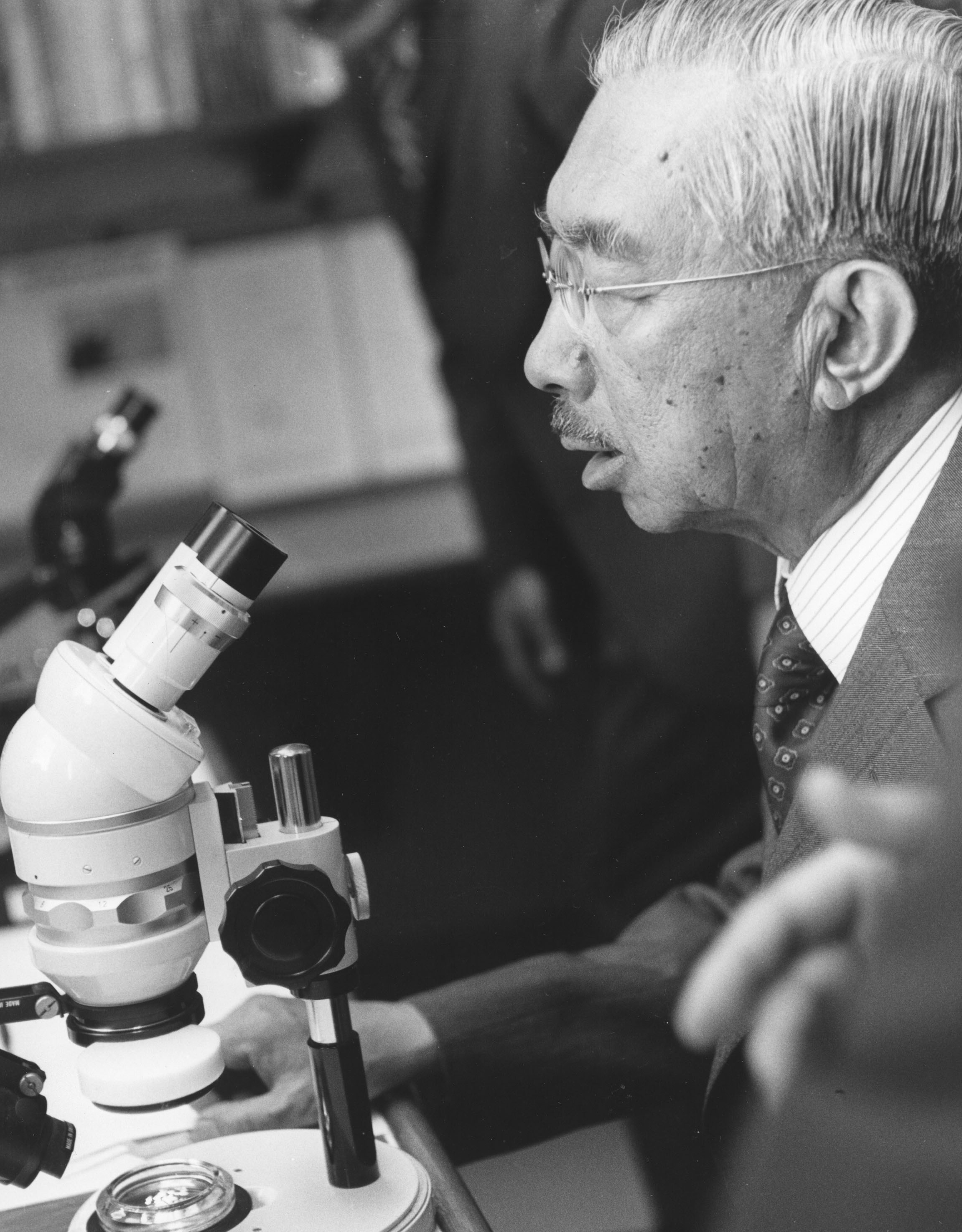
Emperor Hirohito using microscope at WHOI’s Redfield Lab. Photo by Frank Medeiros, courtesy of WHOI Archives.
Emperor Hirohito's affinity for the biological began in the sixth grade when he saw his first collection of marine specimens. This youthful interest marked the beginning of a lifetime of scientific investigations and contributions to the field of marine biology. Hirohito attended Gakushuin (then Peers School) and was tutored by the Special Institute established for the Crown Prince's education.
Hirohito was enthroned as Japan's 124th emperor in November 1928. The new emperor often collected specimens of the flora and fauna near the Misaki Marine Lab, in and around Sagami Bay, site of an imperial vacation villa. He built his own marine laboratory near a mulberry garden on the grounds of the Imperial Palace in Tokyo, employing two marine biologists and a specialist in flora to aid in the classification work. Hirohito worked in this laboratory to the end of his life. Over the years, more than 28,000 specimens of marine life were sent to him from all over the world for classification purposes.
After the war Hirohito published 32 books of plates, describing some 23 new species of ascidians, 7 new species of crabs, 8 new species of starfish, and 6 new species of pycnogonids. He conducted the first comprehensive survey of the biodiversity of Sagami Bay, but he was particularly well versed in the tiny tentacled polyps that grew on the sea floor, called hydrozoans. All of his work was published under the name 'Hirohito Emperor of Japan'.
The Emperor Visits Woods Hole
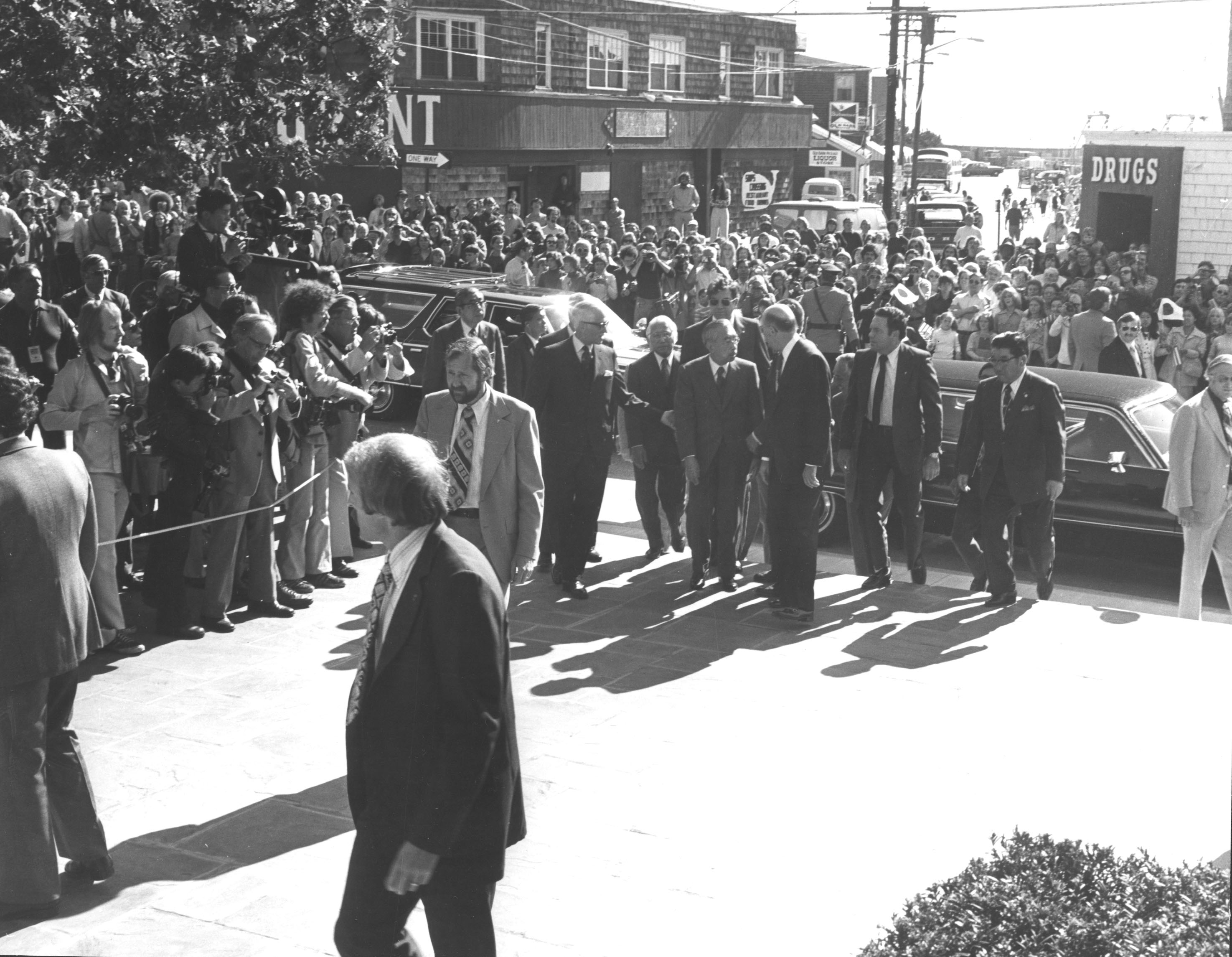
Arrival of Emperor Hirohito at WHOI’s Redfield Lab October 4, 1975. Photo courtesy of WHOI Archives.
In 1975, Emperor Hirohito visited the Woods Hole Oceanographic Institution, Woods Hole, Massachusetts and talked with scientists there about a topic of marine biology that particularly interested him - marine hydrozoans. Some 40 species of the primitive animals are common in the Woods Hole area. He was particularly interested in meeting Howard Sanders, who in his graduate studies at Yale University had discovered an animal that was not just a new species, but an entirely new phylum.
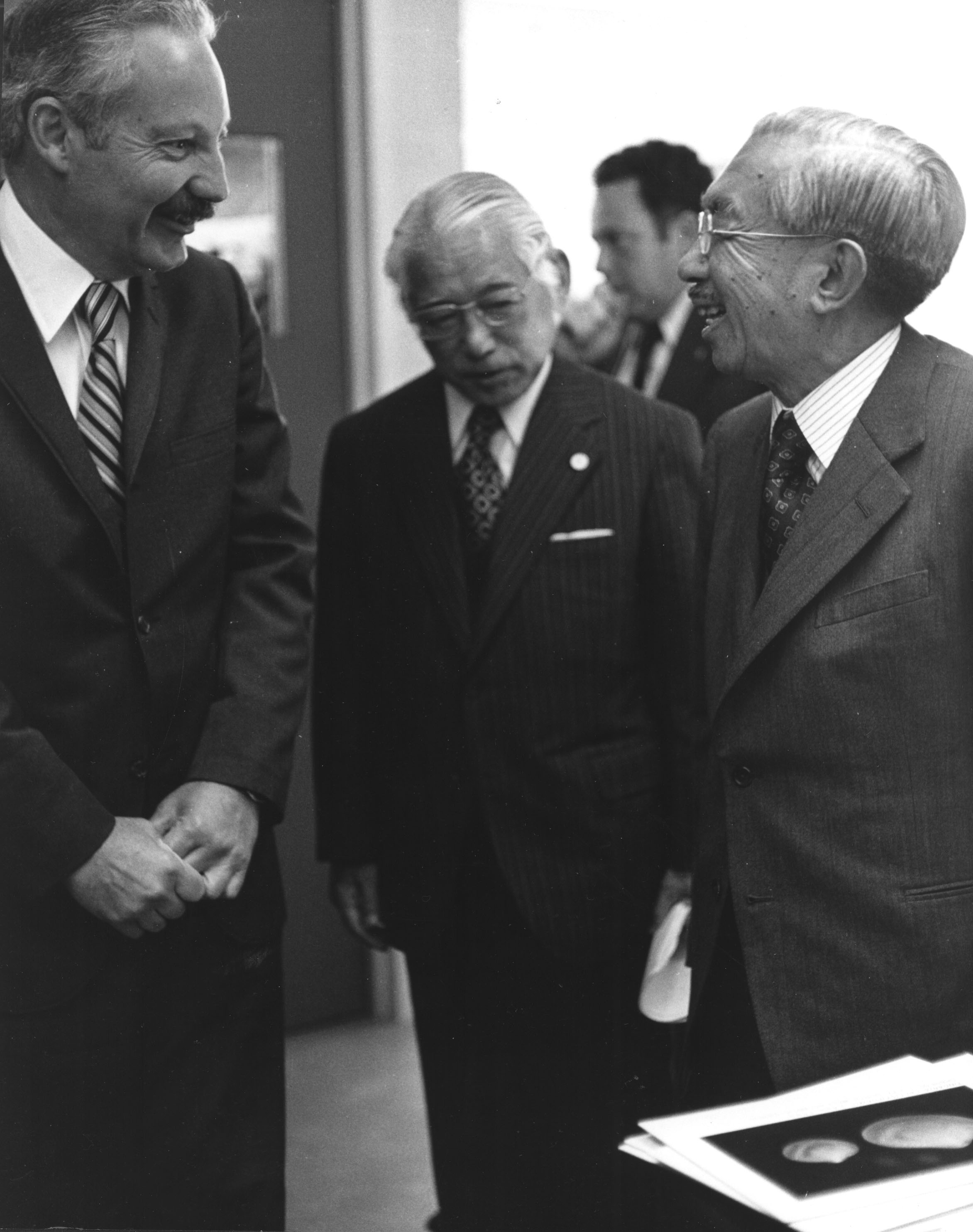
Howard Sanders (left), the Emperor’s personal assistant (center) and Emperor Hirohito (right). Photo courtesy WHOI Archives |
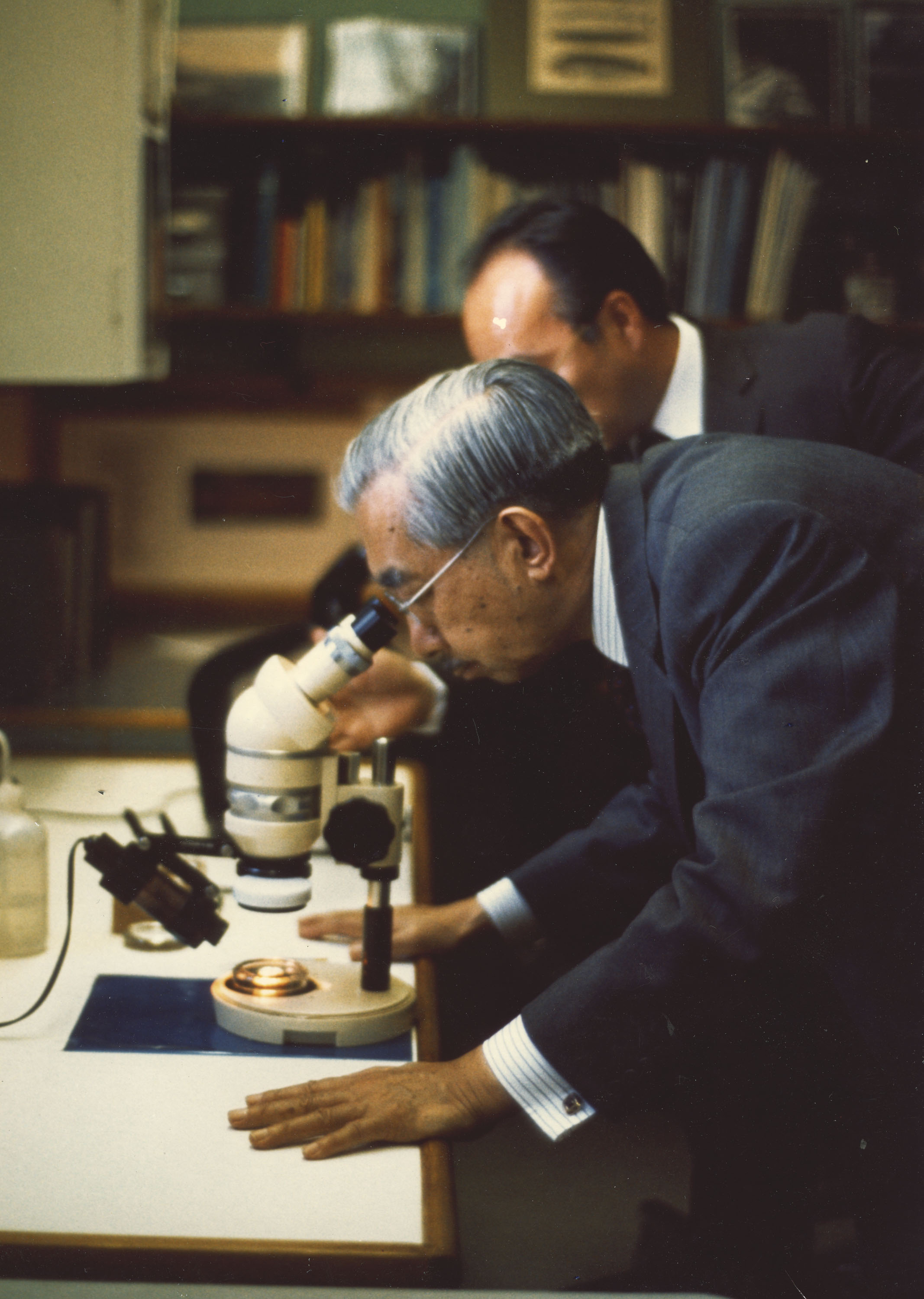
Emperor Hirohito at microscope with Sus Honjo standing. Photo by Frank Medeiros, courtesy WHOI Archives |
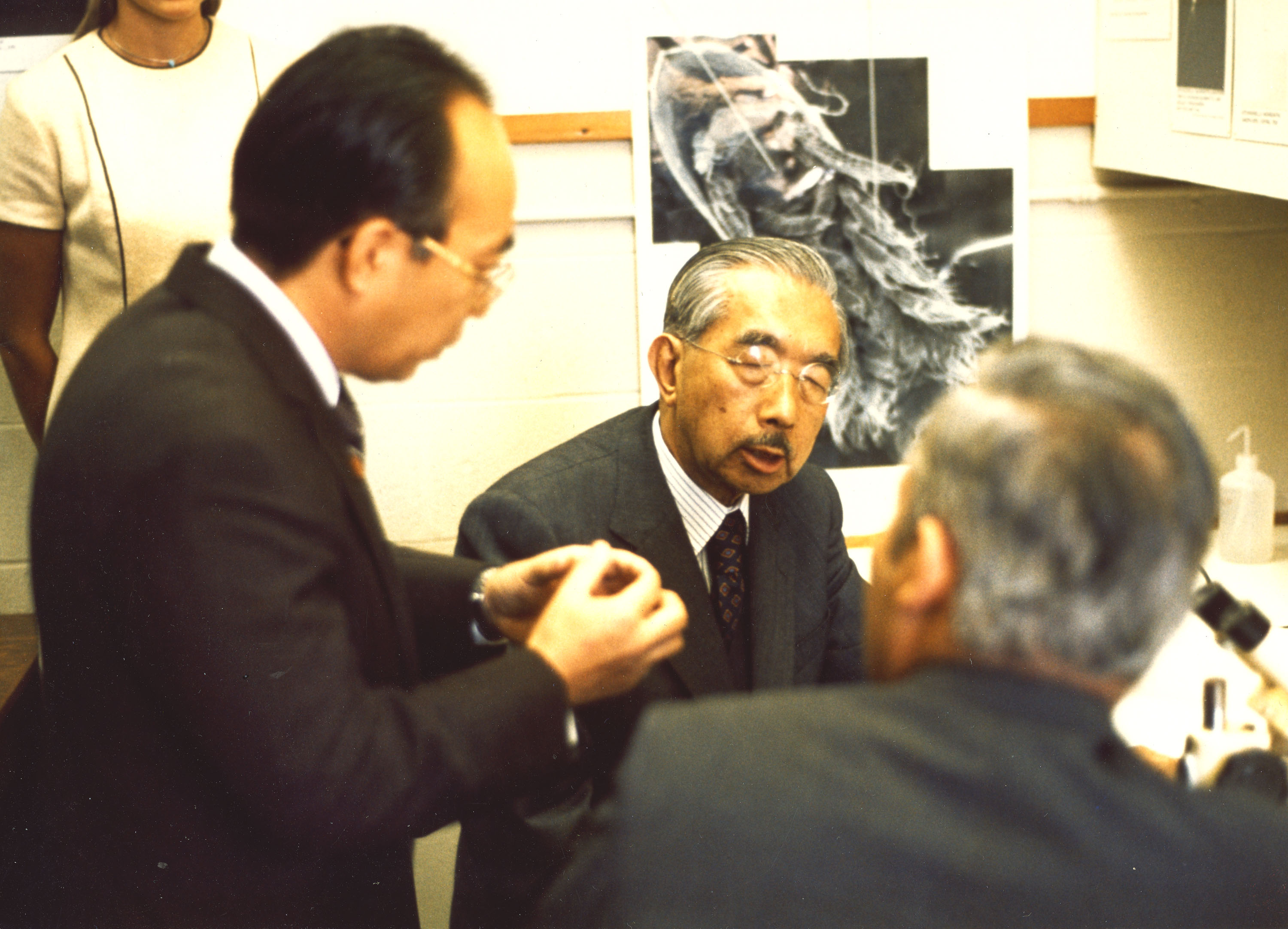
Sus Honjo, the Emperor and Howard Sanders talking in the Redfield Lab. Photo by Frank Medeiros, courtesy WHOI Archives |
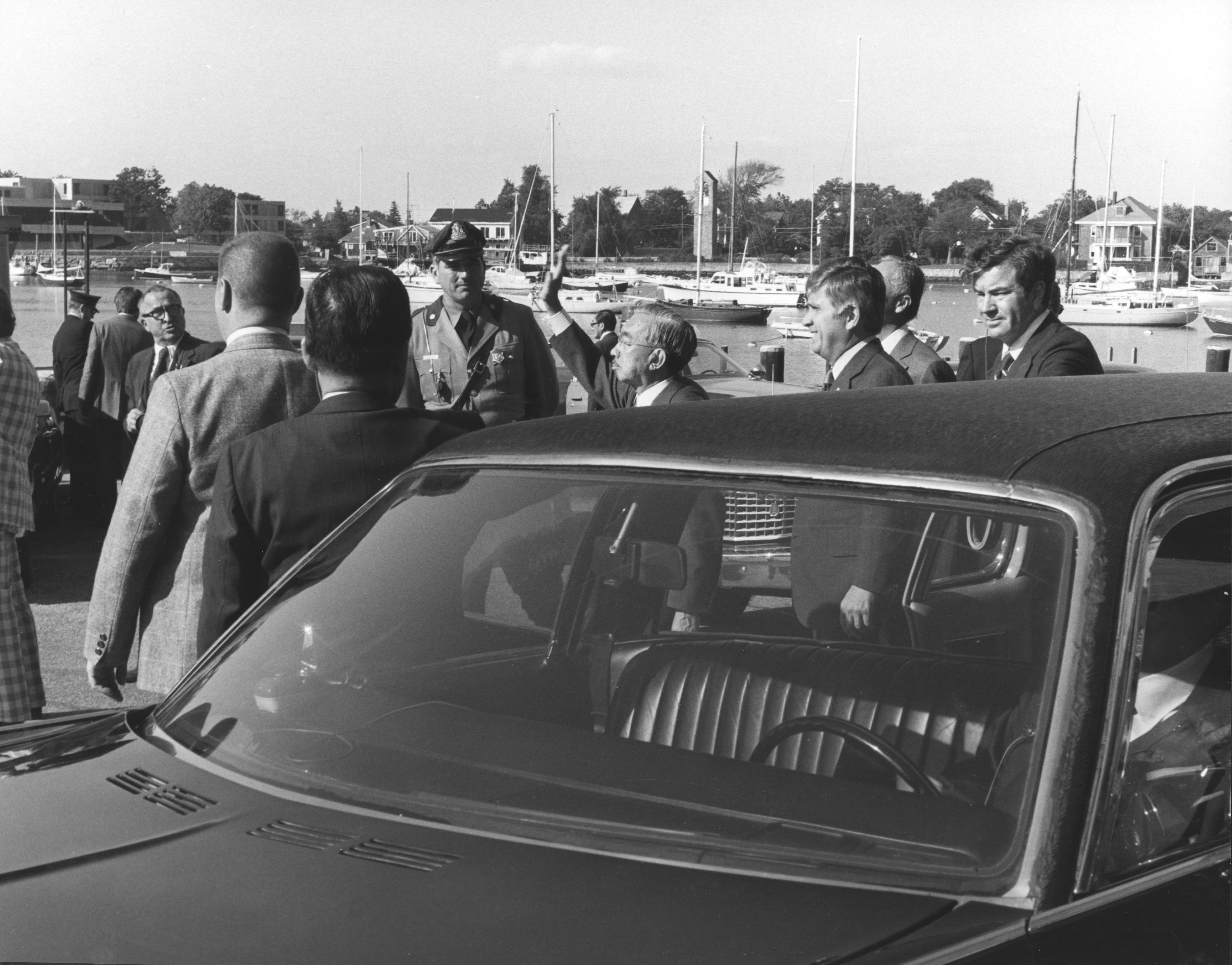
Emperor Hirohito waving to crowd at Redfield dock. Photo by Frank Medeiros, courtesy WHOI Archives |
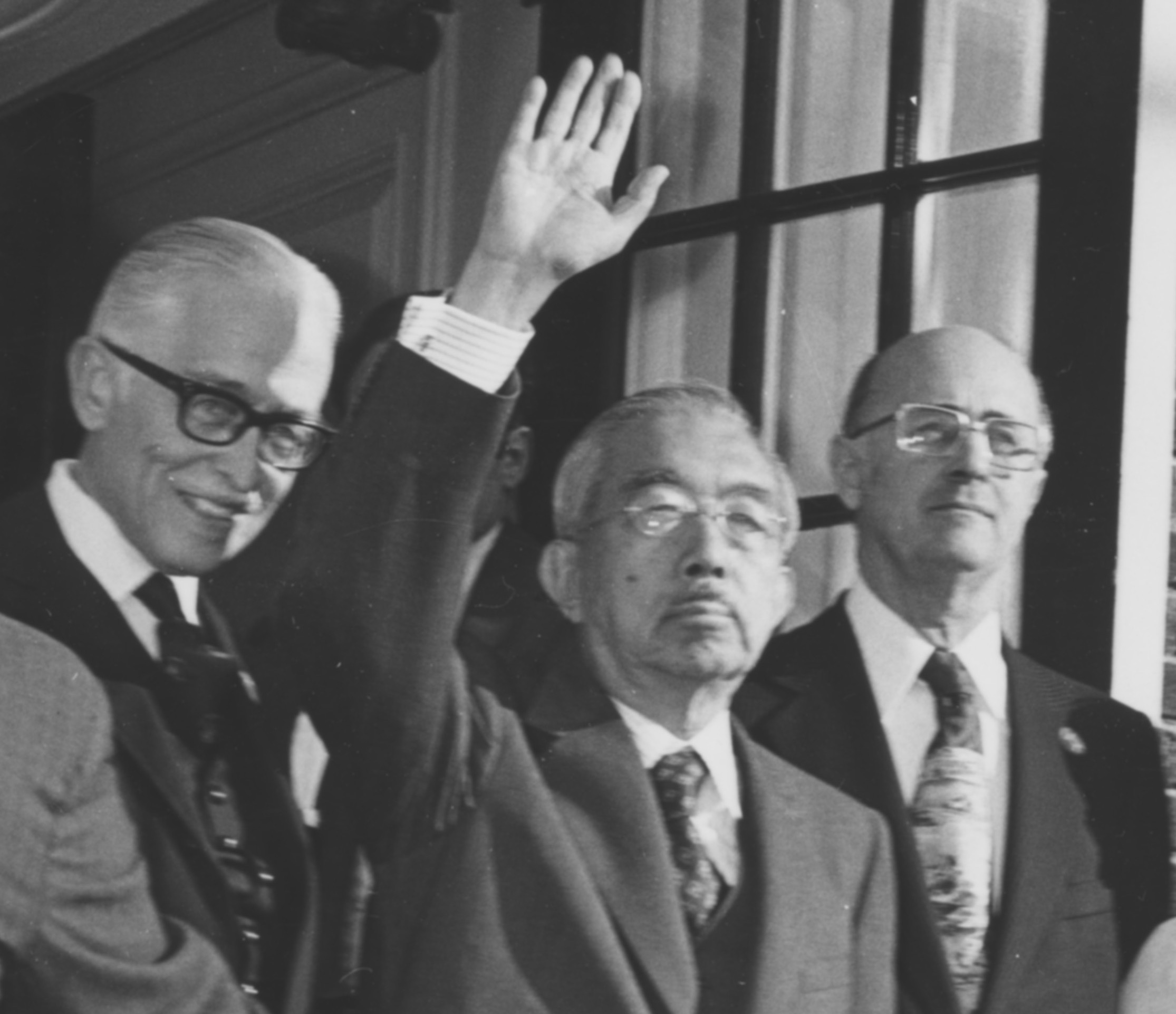
WHOI Director Paul Fye, Emperor Hirohito, MBL Director Ebert. Courtesy MBL Archives. |
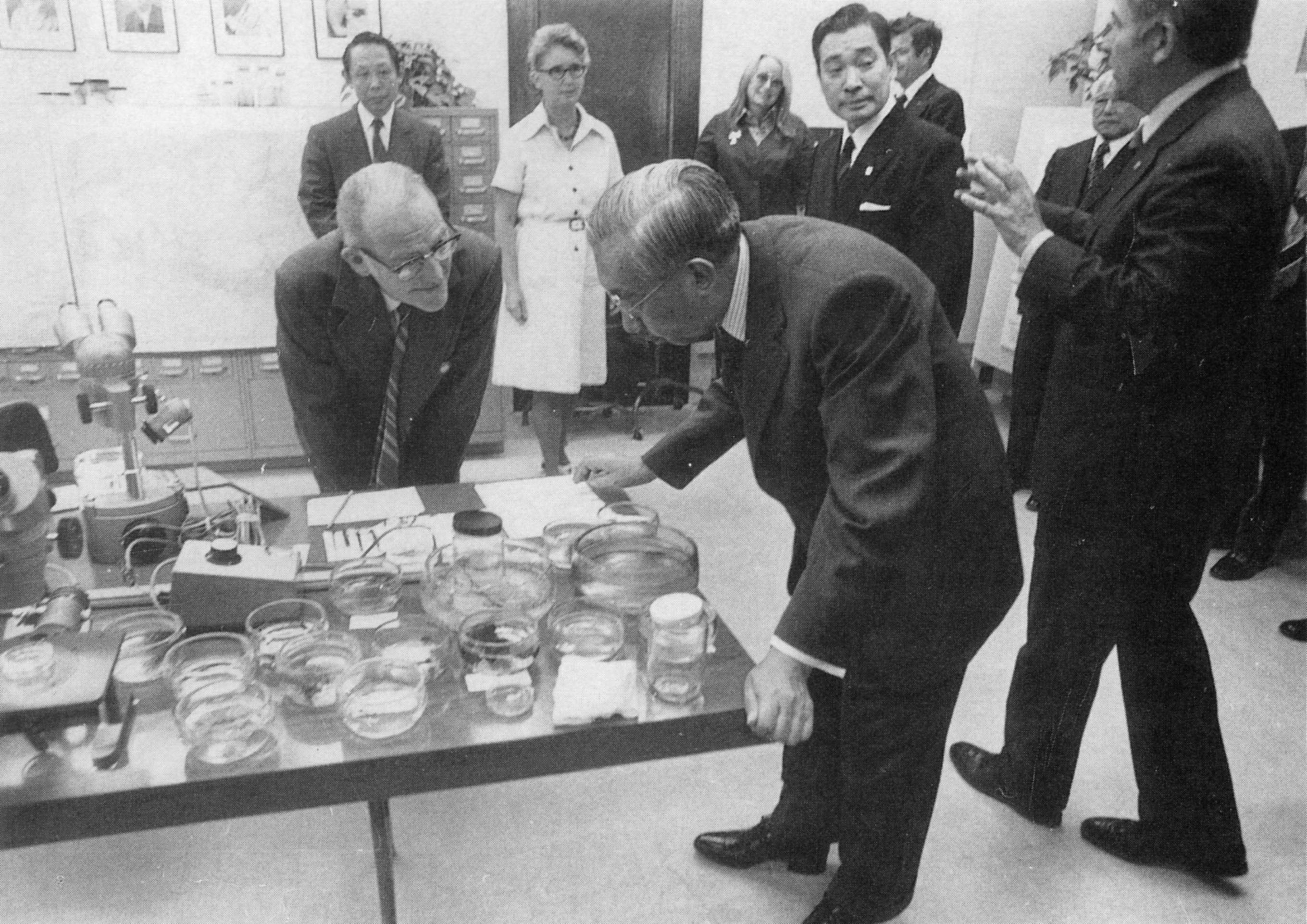
Sears Crowell and Emperor Hirohito examine some hydroids and nudibranchs at the Marine Biological Laboratory. Photo courtesy MBL Archives. |
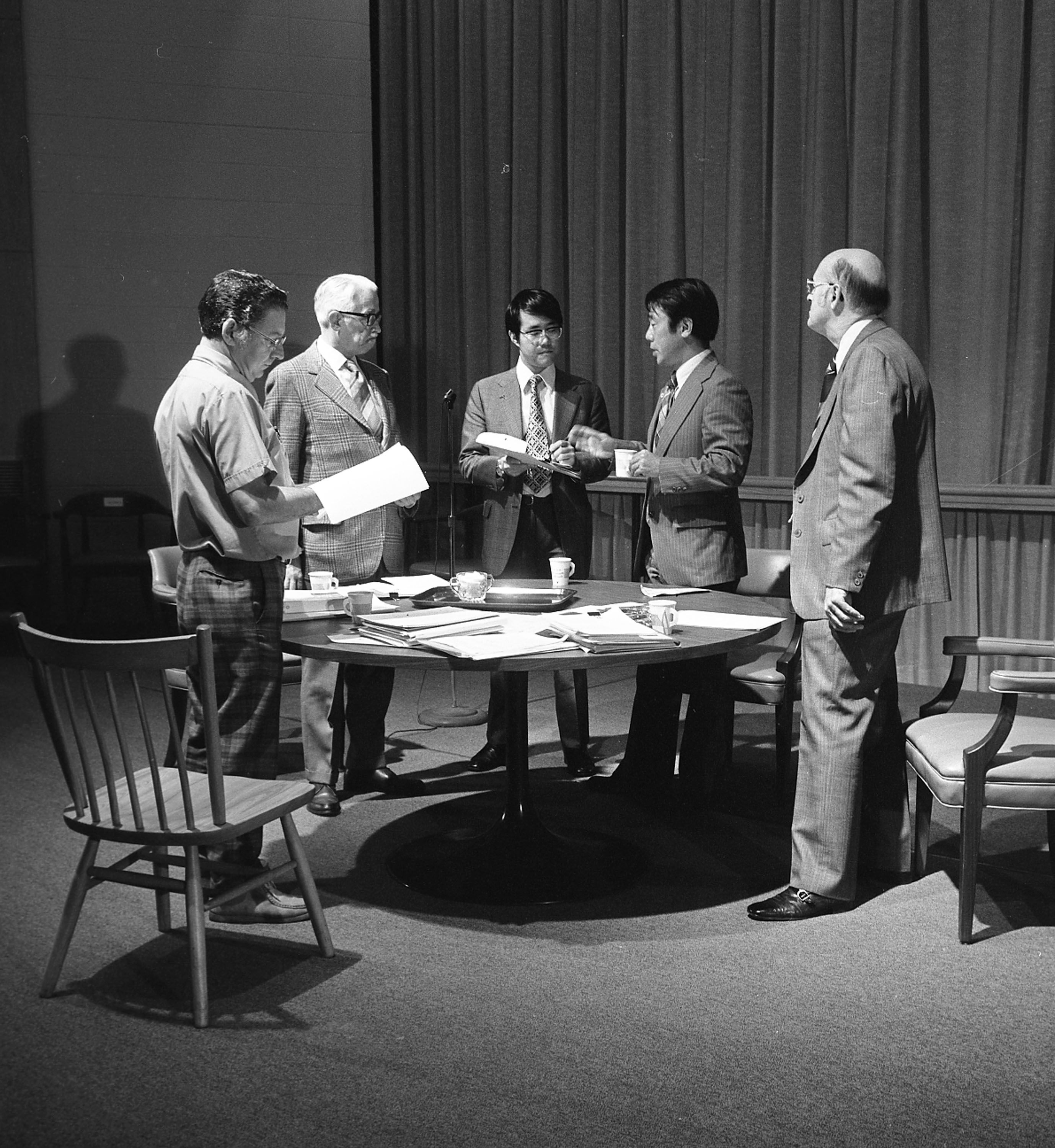
Meeting during Emperor Hirohito’s visit, Charles Innis at left, WHOI Director Paul Fye second left, two of the Emperor’s assistants and MBL Director Ebert at right. Photo by Frank Medeiros, courtesy WHOI Archives |
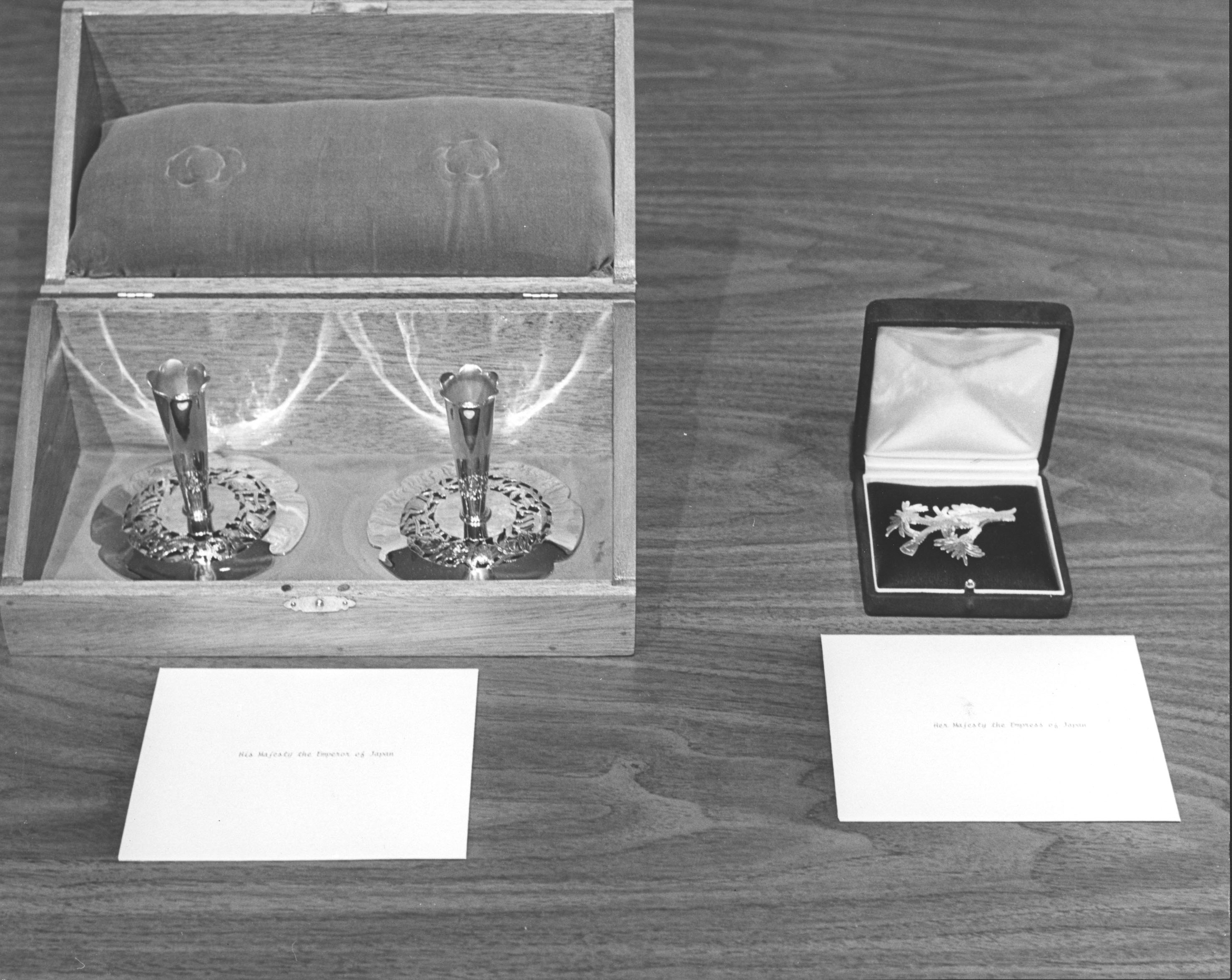
Silver candlesticks with marine theme presented by the MBL to Emperor Hirohito (left). Silver pin with hydrozoan presented to the Empress by the MBL. Both pieces made by Stavre and Gladys Panis of Falmouth. Photo courtesy MBL Archives |